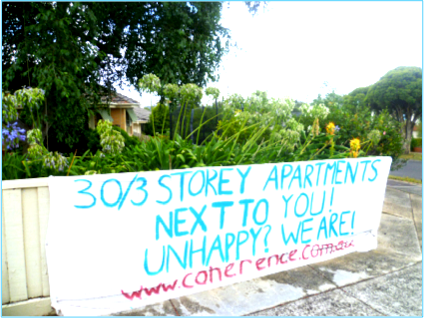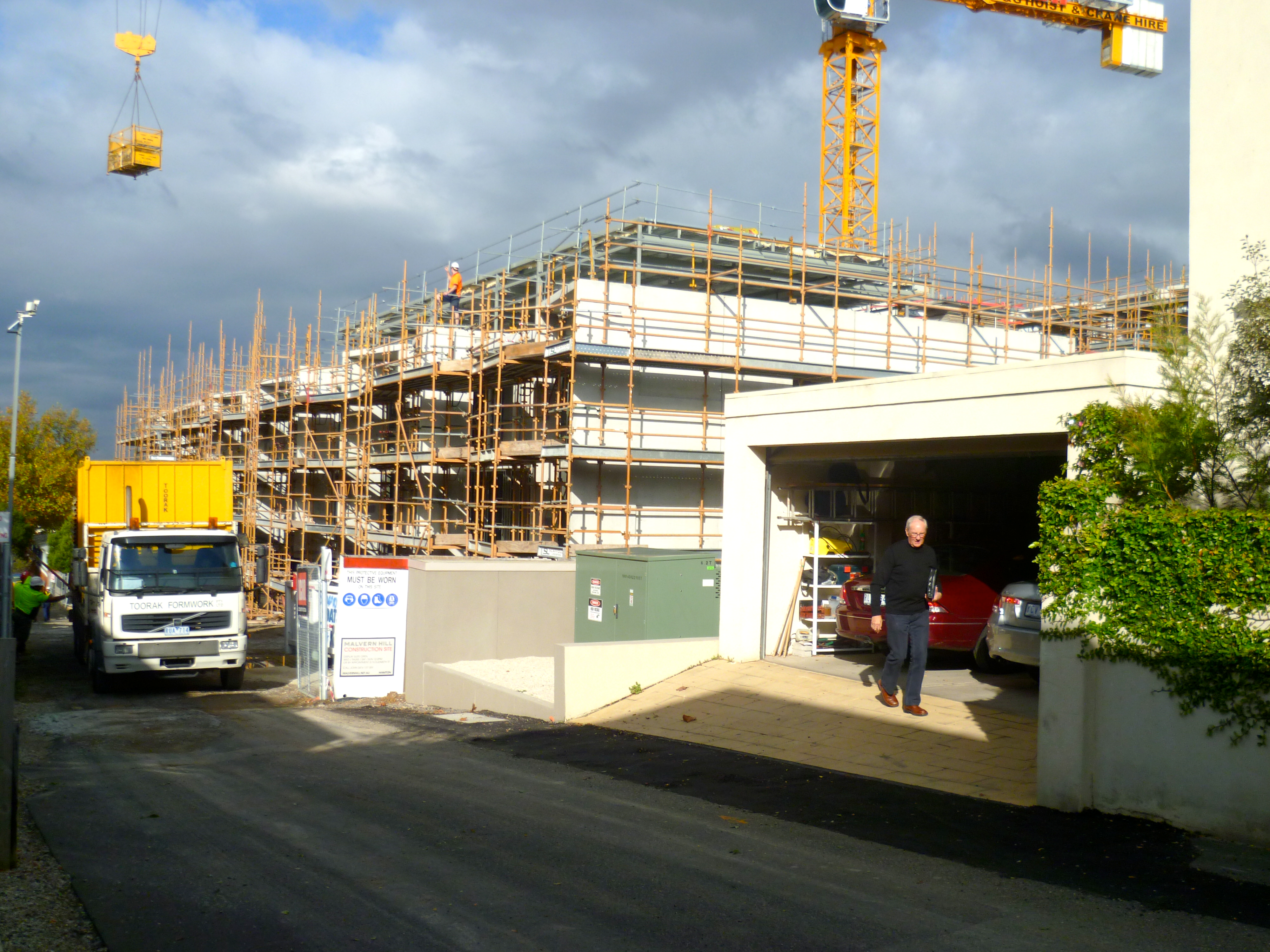Australia’s housing investor-activists
Blog post by Nicole Cook and Kristian Ruming
- Created
- 9 Oct 2020, 4:27 p.m.
- Author
- Nicole Cook and Kristian Ruming
- DOI
- 10.1177/0042098020931320
Abstract: https://journals.sagepub.com/doi/full/10.1177/0042098020931320#abstract
Housing has always been an investment; but an economic and political shift at the beginning of the 21st century placed housing assets centre-stage in the ascendency of neoliberalised welfare states. In the absence of financial security promised by the state (e.g. pensions, social housing, etc.) and in a context of house-price appreciation, housing investment became a key component of asset-based welfare in property-owning democracies.
Given the reconfiguration of housing as investment, we were interested in exploring the lengths to which home-investors go to protect their housing against neighbourhood change.

Doncaster, Melbourne (Source: Nicole Cook)
Housing and urban processes
Our study draws on a conceptualisation housing as a core component of urban planning and development. Homeowners can exert influence on planning decisions via involvement in resident activism that can shape the decisions of elected members regarding planning approvals. This opposition is often greater within the context of housing densification where resident activism often seeks to defend low(er) density suburbia.

City of Stonnington, Melbourne (Source: Nicole Cook)
While resident activism can lead to more appropriate local development, it can also ringfence elite neighbourhoods from development placing the burden of urban change in less-advantaged neighbourhoods.
The devil is in the (investment) detail
Yet, establishing the political inclinations of housing investors is difficult. While opposition to development can be measured by objection data (in jurisdications that have them) and these data often reveal a correlation between measures of wealth and degree of opposition, this tells us little about the investment values of home owners. Indeed, the focus on wealth potentially disguises the inclinations among all housing investors (regardless of wealth) to resist development.
Identifying the investment values of owner-occupiers
Analysing a representative national survey (N = 1122), our study reveals the housing investment values of owner-occupiers and their inclinations to join resident action groups. Resonating with existing analysis of investor figures, we Identify four investor types. Excluding those who eschew investment values altogether (non-investors) our study reavealed the active investor (who valued their home primarily as an investment at the point of purchase along with other investments such as stocks and shares), the housing investor (who has similar point of purchase aspirations but no interest in other investment classes) and the other investor (with diverse portfolios that don’t include their own home).
Political inclinations were strongest among active investors
Our analysis reveals that those with the strongest investment values- active investors- are also most inclined to join resident action groups. Participants in this group did not conform to the suburban activist stereotype: they actively embrace higher density dwellings (as dwelling and investment), were younger and had less commitment to their current home than other groups. They were, nonetheless, the most inclined to take political action against housing intensification, to protect the investment value of their dwelling.
In contrast, older home-owners living in detached dwellings, with little sympathy for high density development (housing investors) were the least inclined to mobilise in opposition. The data suggest that accumulated housing assets (for this group) are a more reliable (and bankable) buffer against neighbourhood change than the uncertainties of political action.
Expanding conceptualisations of housing investors
The paper reveals the agency of financialised owner-occupiers who, as investor-activists, seek to influence planning processes to protect the profitability of their housing assets. Our research offers new insights on the way financialised home ownership and investor subjectivities underpin urban opposition.
Read the accompanying article on Urban Studies OnlineFirst here.


james souness posted at 13:36 11/12/2020
The amount invested in a house, equal to the sale price less the loan amount. The House Investment Decision: Lenders impose the upper limit on how much a household can spend for a house. Anyhow i going to introduce my site Town Planners in Brisbane australia
The cheapest way to build your house is to take a quote from all the available builders in your area. You can also compare their pirces and services quality. You can take a free quote from Brisbane Town Planner which who are one of the top and cheapest in their area.
https://www.townplannerbne.com.au/
Flag this Comment